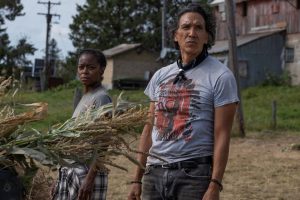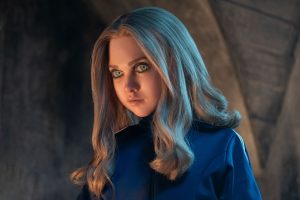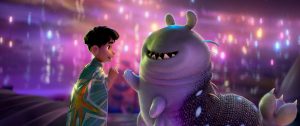Reviews include 40 Acres, Jurassic World: Rebirth, and Sorry, Baby.
Night Raiders’ Danis Goulet on Crafting a Distinct Dystopian Vision
February 28, 2022
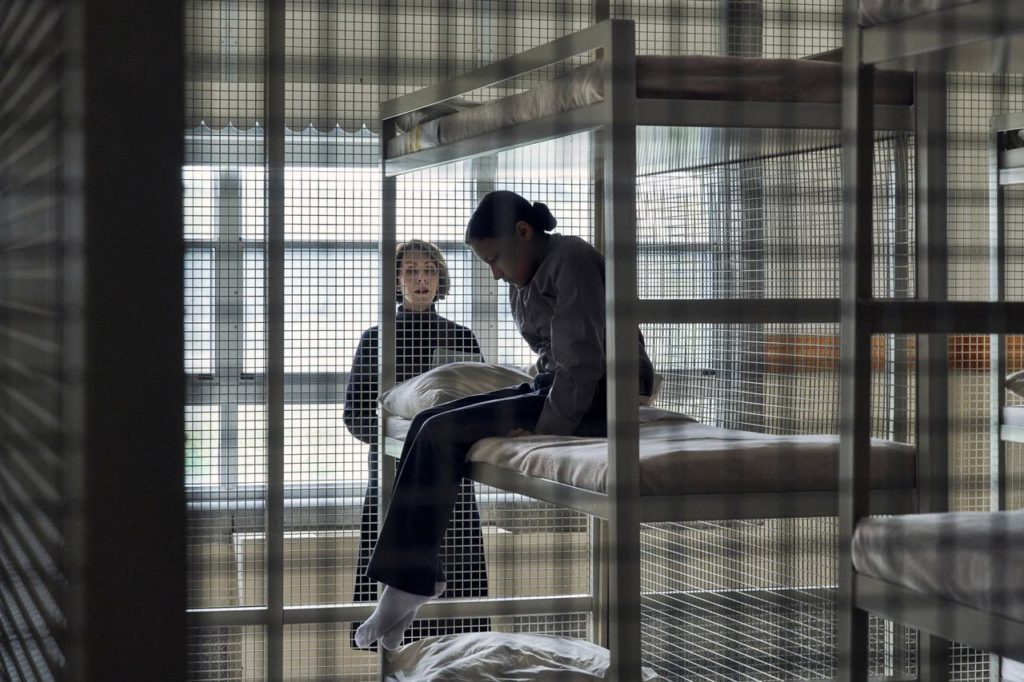
By Jason Gorber
Danis Goulet has been a prominent voice in Canadian cinema for several years. Born in Saskatchewan, she began making short films until life led her to the programming side of the industry. On the festival front, she served as the director of imagineNATIVE, building its international reputation and helping foster an explosion of indigenous cinema from communities around the world. She’s finally shifted to directing her first feature, Night Raiders, after a long and deliberate gestation period.
Night Raiders is a dystopic story about childhood trauma and the integration of technology into community in the near-future. The film stars Elle-Máijá Tailfeathers, Brooklyn Letexier-Hart, Alex Tarrant, Amanda Plummer, and Violet Nelson. The film saw its world premiere at the Berlinale in Spring, 2021, before heading home to TIFF in September. There, Goulet was awarded the festival’s “Emerging Talent” award, and Night Raiders was showcased at a gala screening for local audiences.
Night Raiders was eventually selected as part of TIFF’s annual Canada’s Top Ten list, and now has been selected as one of three films vying for the Rogers Best Canadian Film Award from the TFCA, along with Beans and Scarborough.
We spoke to Goulet prior to the gala celebration set for March 7 about her early film-going experiences, navigating the many genre tropes she was engaged with, and how unique aspects of her culture translate into the popular medium of cinema.
The following has been edited for clarity and concision
What was the first film you saw that made you fall in love with cinema?
I grew up in a small town in northern Saskatchewan called La Ronge, which lays on a lake four hours north of Saskatoon. Back in those days, there was this amazing little theatre called the Aurora Theatre, which was by the dock, next to a Chicken Delight that had an arcade. No little town like this would ever have a cinema anymore, but back when I was around, it did. When a movie, and especially a big movie, played, it was a big event. I remember sitting in my kindergarten circle and my teacher asking who saw the movie last night, and we were all talking about E.T. because it had come to town the night before. It was all mainstream cinema. I went to Return of the Jedi, Tron, and King Kong. I remember being very taken with the experience. The projector used to break down and everyone in the theatre would stomp their feet until they got it going again!
I fell onto a film set by accident because I got hired by Tasha Hubbard. She’s an amazing filmmaker in her own right, and it was both of our first jobs on a film set, which was a CBC miniseries called Big Bear. On day one I caught the bug – this is it, this is what I was tethered to. I’m going to say how old I am just by saying that I had a camcorder on my shoulder throughout much of my young life, but I always just thought of it as a hobby thing. I don’t think in Saskatchewan you really have this kind of awareness that it could be a job. I mean, University of Regina has a really decent film program, but I think for me it just didn’t exist in my psyche.
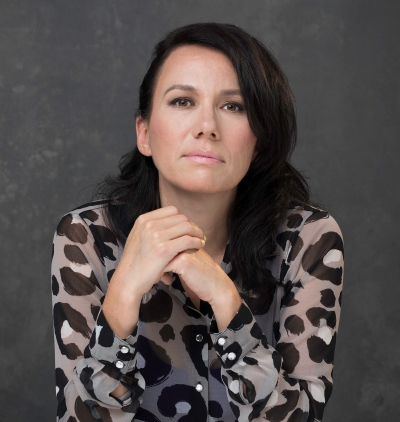
What brought you to Toronto, other than the obvious fact that it’s the centre of the universe?
Film, actually. I moved out here with my partner, and he got into the Canadian Film Centre for screenwriting. But at the time when I started thinking about actually making my own work, all I wanted to do was go home and shoot stuff about back home. When I started to make my shorts, I would get grants and then go to Saskatchewan to shoot. Then I made a short here in Toronto, and then eventually Nights Raiders here too.
In between that, you did some festival work. How do you skate that edge between filmmaking and programming, and the related pressures they bring?
I really knew nothing about film festivals and film programming. Then one fateful night, I went to the opening night of Hot Docs because my boss had an extra ticket. I saw someone that I thought I had met before at imagineNATIVE, and he invited me to a dinner. Soon I met everybody from imagineNATIVE, and I was on the programming committee by the next year. This was the early 2000s, so the festival was very young. The next year, there was a changeover and I ended taking over as director of the festival.
I had worked in casting up to that point, so I didn’t know anything about the other side of distribution, film festivals, etc. It was trial by fire, but imagineNATIVE was my education. It was grounded in Indigenous cinema, and we were watching everything that Indigenous filmmakers were making from all over the world.
There’s a natural thing that happens between programming and the choices you end up making as a filmmaker by virtue of watching so much content. Eventually, I left imagineNATIVE and did some stints elsewhere, and started working at TIFF. There again, you see everything from all over the place. That definitely informed my filmmaking…filmmakers have their influences and the people they love. It’s such a great education to program and to analyse what works and what doesn’t.
How do you see your work with imagineNATIVE with your growth as a filmmaker?
When I got involved, it was an amazing time. We’d seen the first waves of Indigenous cinema with a cluster of documentary filmmakers who started through the NFB initiatives, around the late ’90s, Certainly Alanis Obomsawin is the queen of Indigenous cinema. We call her our grandmother, and the other grandmother is regarded as the late Merata Mita from New Zealand. Around that time, Atarnajuat [2001] had come out and was a landmark achievement. It was global and put Canada on the map.
Many of us were excited by that film and the potential that it could open for everybody because it felt like there were still problems of access. It felt the early times of making the case for Indigenous people in key creative roles while telling of Indigenous stories, but imagineNATIVE’s mandate from the early days was to support films that were made by Indigenous people, not just ones that had Indigenous content. At that point, the industry wasn’t making any distinction, but there were still rumblings of talk that it’s not okay for white people to play Indigenous people.
Around that time, there was a lot of recognition in Canada on the part of the arts councils to support Indigenous arts. They had offices like the Indigenous arts office at the Canada Council since the ’90s. But if you compare that to Australia, they had an Indigenous screen office since the ’90s. We were looking to them as leaders and saying they’re burgeoning this entire generation of filmmakers like Rachel Perkins, Warwick Thornton, Ivan Sen, or Wayne Blair. Their movies were obviously being seen at Cannes and major international film festivals. And, of course, there’s Taika Waititi.
Over the last two decades that we’ve seen this explosion Indigenous cinema, we’ve also seen the use of genre from people like Jeff Barnaby and Taika Waititi to tell deeper stories. Were such genre films the key to your own feature journey?
That was a lightbulb that probably didn’t go off until I made my short film called Wakening, which was shot in the Winter Garden Theatre. That was a commission, so it was a project that came up quickly and I didn’t have much time to consider it. Up to that point, I had just been making straight-up dramas, and I thought it would be interesting to do something with the characters from the oral storytelling tradition. Two main characters from Cree stories are Weesageechak and Witiko and they’re both supernatural beings. One of my laments is that these characters were always treated in sort of quaint, folkloric ways. These are the original stories of the land of the territory of the Cree, they’re the classics of this land, and yet they weren’t really regarded in that way.
When you have supernatural beings, you’re immediately in the fantasy genre in film language. These characters are also thought of as being of the past, as folklore, so I wondered what would happen if I placed them in the future, like a declaration that they will always be here and that these things will prevail. I’m interested in the threads of the past, present and future as well, so I made this short film about two characters who meet up in a dystopian future set in downtown Toronto.
I’ve totally grown up on genre films like lots of people. I loved The Matrix when it came out. My heart was bursting at the end of the movie because I felt like it was coming from a subversive voice, and I could feel that voice and the message in it. People read that film in all kinds of ways, but, for me, as a young, Indigenous person, the world of The Matrix is one of colonization. It’s everywhere and it controls us, and then the band of rebels going up against this all-encompassing thing that controls all aspects of their lives. In the film festival world, I grew up on art house cinema. It was all about the meeting of those two things. For a while, I was really crushing on social realism and I thought it was what I was going to do.
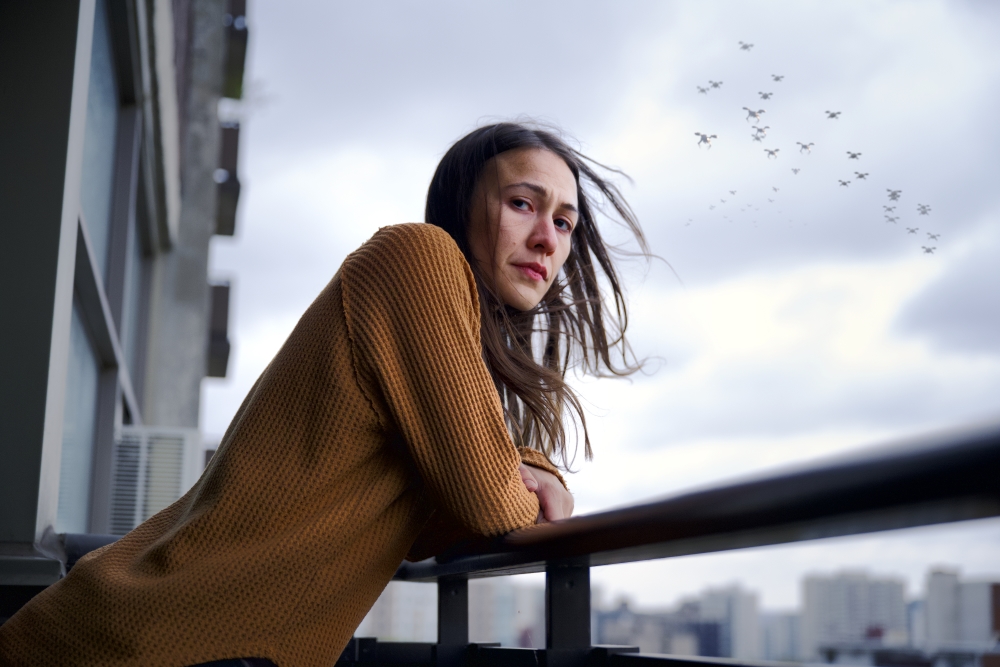
Who is your definitive social realist filmmaker?
I love Andrea Arnold, of course. I actually remember seeing Wasp, her short film at Sundance, and just being blown away. I watched Red Road, and I really loved Fish Tank. I felt that realism lent itself well to the kinds of stories I was interested in. But there was also something about fantastical things in an Indigenous context that’s really important in the way that the culture expresses itself. Zacharias Kunuk’s The Journals of Knud Rasmussen is a beautiful example of that. I remember when I first watched it, I didn’t realize until halfway through that half of the characters on screen are spirits. Kunuk never explains that to you and to me, and it was so beautiful in the way it was presented as real.
These different elements would be categorized as magical realism and offer something fantastical. That again allows you to reach into the genre space. The marriage of grounded realism with things that are fantastical opened up a space that really brought me to Night Raiders.
Were there specific films you referenced to the cast and crew while making Night Raiders?
Of course, there’s Children of Men. That’s not just because there are no children in that world—that’s almost a coincidence. It’s more the aesthetics, the near-future world, and the restless, reluctant hero. I’m quite fond of that trope. There is strength in how emotionally tethered you feel to Clive Owen’s character throughout the journey. The film is amazingly shot – I mean, everyone studies the big one-er where Julianne Moore is shot in the car. It’s an amazing film.
Were there other references? Anything literature, or documentaries, or paintings that shaped your vision Night Riders?
There was all of Andrea Arnold’s films and I remember checking out Chop Shop back in the day, but the aesthetics of Night Raiders were established in some of my earlier films. I worked with the same DOP, Daniel Grant, on pretty much everything. We knew what language we were going for before we got going. And, of course, I was influenced by Cree stories and concepts, which just comes from home and when I’d literally sit at the kitchen table with my dad and talk about stuff. I’d just record conversations and there’s lots that comes out of those stories.
Were there specific tropes or narratives that you wanted to avoid? This easily could have come across as a really shitty Hunger Games.
That’s an interesting distinction because I didn’t want to go over to the “Young Adult” side. There’s a youth theme in the film, for sure, and that comes from being inspired by the youth in Indigenous communities and the way they’ve stood up. Even though it centers partly on a young character, I didn’t exactly want to go over to YA.
Any Indigenous filmmaker is thinking a lot about the history of misrepresentation. I was very concerned about the mystical Indian trope with characters having magical powers. We’ve all seen the film where the wolf emerges from the bush, and you hear flute music and then the eagle cries, and whatever. How you introduce fantastical elements without going over to the side of those negative archetypes of the magical Indians was one thing that I was afraid of and very cautious around.
Were there specific moments that overtly subverted those expectations?
One of the tropes was AI. As soon as AI has its own awareness or becomes sentient, there’s a prevailing trope that it’s just going to kill us. A lot of critique within the Indigenous literary and academic community has led this discussion, wondering if that is a colonizer viewpoint. If we are colonizers, the machines are going to colonize us back. Without getting into spoilers, I created a character who does not regard AI through that classic lens that it’s evil. I was also interested in the work of my friends who are artists, like Archer Pechawis, who wrote this awesome article about whether or not we as Indigenous people would invite AI into our kinship circles at the point when they become sentient.
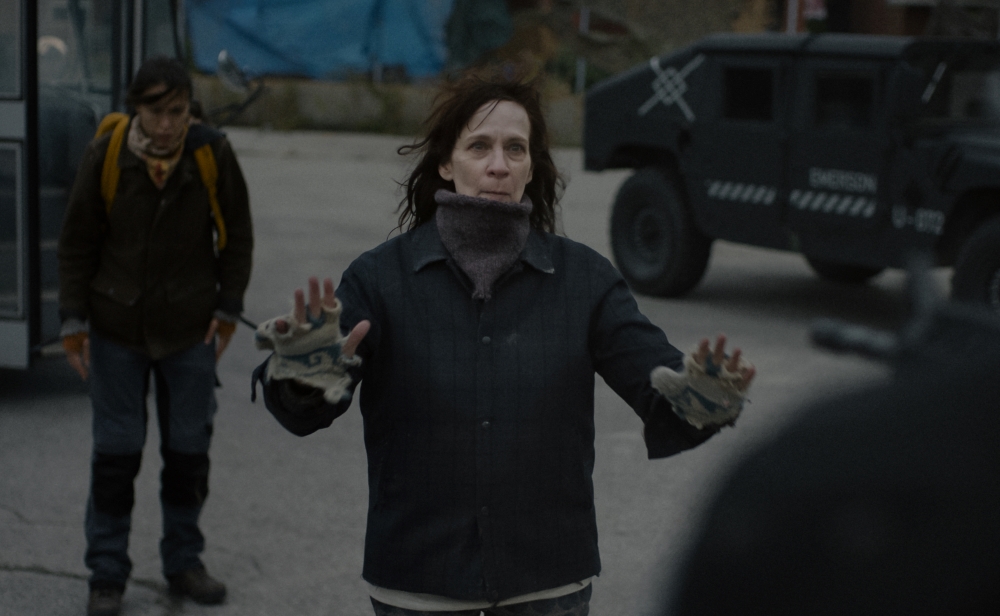
Given all of these elements, could you talk about the challenges of just getting this film made?
In the beginning, it felt just very lonely. I was the sole writer in development for years. You go through cycles wondering if this this going anywhere. I think the moment that Get Out came into the world changed everything. Suddenly, you could be in rooms and have an example. We were using genre to make a point from a very specific point of view, and Get Out created a rupture in the universe that opened the doors for all kinds of communities.
Was there a moment when you realized you have also planted seed whereby other things will branch off from your film?
Within the Indigenous community, our forays into genre within the feature film format are such that you can still count them on one hand. Certainly, Jeff Barnaby has been doing it since the beginning of his career and leading that charge. I think it will open things up. Nyla Innuksuk’s Slash/Back is going to be at SXSW in March, and that’s another genre addition to this exciting, burgeoning area.
When you’re in survival mode, you’re just getting it done. You never know what things are going to mean to people, and I leave that to others to decide. But I also wanted to create something that allowed me to speak to my community. I see them as a priority audience, one that hasn’t been in the forefront very often.
Were there moments in which you needed to reach into the legacy of these types of films to tell the story?
That wasn’t in the forefront—how this would be situated in the genre context. I just kept going to the places that I found interesting. For example, in the Cree language there’s a structure of inanimate and animate. Rocks are animate in the language! That informed the choice for the way the drones would be regarded as closer to animals. Those philosophical things in the culture might change my approach to certain tropes.
Some elements you’re drawing fro mare very specific to Cree, but I think you’re also a child of Spielberg in the way Spielberg is ambivalent about technology and family and sacrifice.
For sure—I just don’t know to what extent I’m conscious of it. Even as moviegoers, we begin to internalize storytelling and narrative tropes. Sometimes I’ll see my kids edit a TikTok video and wonder how they even know that editing style or how to create that dramatic beat? I grew up on genre movies, but I wasn’t a genre fiend. I wasn’t the person who has all of these kinds of obscure references to Midnight Madness movies, but drawing on that was part of the paintbrushes being used.
What it was like seeing the words brought in front of the camera? How different was it making a feature vs. making a short?
I just break down a scene. How do you teach yourself to do anything? You study it. There’s a girl fight in my movie. I looked at other girl fight scenes and said, what are the actual building blocks of this? Some filmmakers use cuts to punctuate action. Other people just hold on action throughout. I was first a bit baffled by action, but then I was realized that you shoot action within the aesthetic language of your own film. You already have a style set out for you. From that point, it really is just about breaking it down. You’re going to shoot it twice because it’s going to have a stunt person do it and then the actor do it.
The thing about film that’s so weird is that your key personnel are working all of the time, and you as a director work every once in a while. I value my collaborators as their own visionaries. I’m not a big fan of auteur theory, and I don’t think vision is singular. You bring obviously your vision as the director, but then you meet with people who also bring their vision. The meeting of those two things creates an elevated version of what a singular person brings. The visionaries that I was able to work with, like [cinematographer] Daniel Grant, [production designer] Zazu Myers, and [editor] Jorge Weisz, each came with specific ideas about how to build these worlds, how to shoot them, how to edit this. It enormously beneficial to work with that kind of collaboration.
And the cast of Night Raiders?
I knew Elle-Máijá Tailfeathers mostly as a filmmaker—I had forgotten that she was an actor. The casting director that we were working with sent her tape in and I was like, “Oh, Elle-Maija!” By the time we got to callbacks with her, I was crying. She was so brave and incredible. I’d worked with Gail Maurice before. I love her. She is an incredibly talented actor but also a language speaker. To have that skillset in one person is just incredible. Brooklyn, who played Waseese, was found in Winnipeg through a local casting director. We looked at 300 kids all over North America, so she was a real find. It’s tough because, with her character, you’re looking for that in-between age in which they’re not a kid, but have not yet crossed over into total teenagehood. That crossover space is a very specific moment. By the time Night Raiders came out, she’s this beautiful woman suddenly at age 15. At the time we shot, she was still in that space and had incredible instincts for such a young person. We found Alex, who played the Maori character, through our producers in New Zealand. I didn’t write with certain people in mind. I came to casting very openly and feel so lucky to have assembled all of the people that we did.
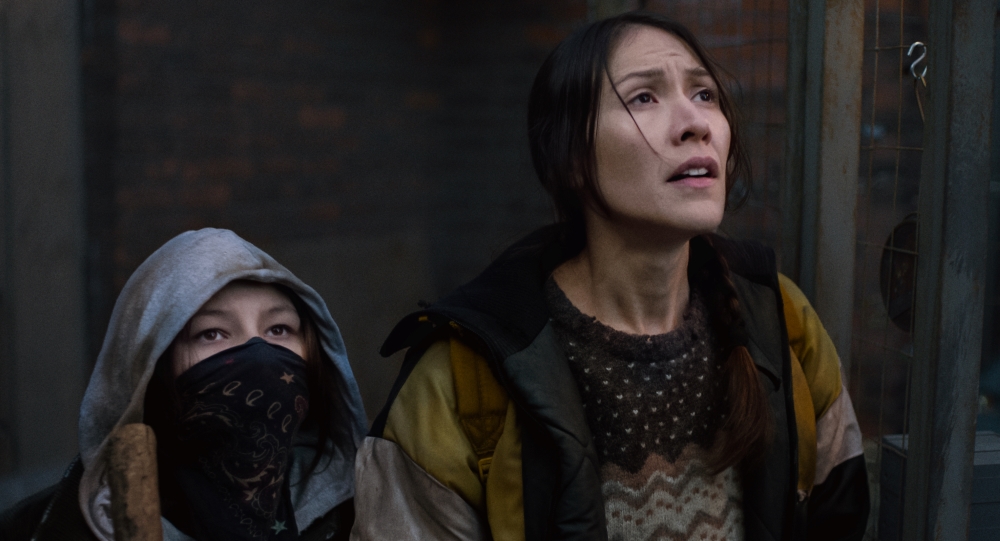
Can we talk about the connection with a certain famous Maori filmmaker and how all of that worked?
The global Indigenous film community has been greatly interconnected for many years. Maybe that’s a secret to the outside world, but we all meet up! imagineNATIVE is a mega hub for that, and always has been. I met Taika at Sundance in 2004. There’s a community of people and we meet up on the film circuit. Even when I worked at imagineNATIVE, I presented Taika and hosted him. He participated in a short film commission that I ran, so we’re friends. And now he’s become this superstar! When I was getting ready to make Night Raiders, there was a dream to foster more Indigenous co-production because those connections are so organic and they’re pre-existing. Part of the challenge of co-production is how do you actually meet someone from Denmark and then foster that relationship?
Ainsley Gardiner came on as the New Zealand producer. She’s an Indigenous woman and she had produced Taika’s early films, like Boy. I had this Maori character in the story and I went to a screenwriter, Briar Grace-Smith, who’s a friend of mine in New Zealand and asked if it fit. I wanted to reflect the solidarity of different movements in the story. Often, Indigenous nations show up for each other and I’d = never seen that on film before.
There’s this character who’s come from far away to help and to live as an adopted member of this community. I went to Taika and asked him and he was like, “Send me the script.” It was actually not a very difficult process—except to try to get him to respond to an email is probably the hardest thing! [Laughs]
Do you read reviews of your films?
I did find it pretty overwhelming around the release, so I read only some reviews. It feels like there’s a tidal wave and you can’t process it all at once, especially something that has come from such a deep place that you’ve been dreaming about for so many years. It feels excruciating for someone to start breaking it down and analyzing it—that’s not to say that it’s not a very valuable engagement. It’s just that I felt so incredibly exposed that I couldn’t handle it.
At the same time, because I come from film festival land, I judge myself on different terms than a popcorn movie would. This is about the land that we’re all on together, so I don’t think I’ve fully processed the way it was embraced by Canadian critics, to be honest. I’m only starting to let some of it in now. You come from Saskatchewan, and you come to Toronto with a dream. I’ve spent years trying to support different filmmakers in the industry, and so when you finally go to make something, it’s terrifying.
Night Raiders is currently available on home video and digital release, including via TIFF.net and Cineplex.

